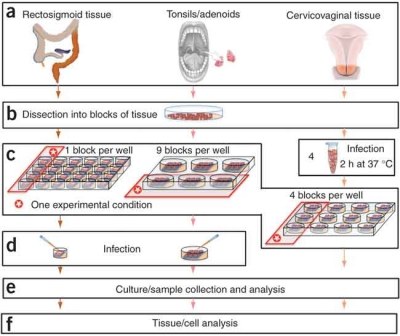Use of Human Tissue Explants to Study Human Infectious Agents
5/29/2014
Grivel JC, Margolis L. Nat Protoc. 2009;4(2):256-69. doi: 10.1038/nprot.2008.245.
The study of human cell-cell and cell-pathogen interactions that occur in the context of complex tissue cytoarchitecture is critical for deciphering the mechanisms of many normal and pathogenic processes. This protocol describes methods for culturing and infecting explants of human tissues to study the pathogenesis of human infectious agents and their local interactions. The protocol relies on the use of fresh human tissues dissected into small blocks or biopsies that are cultured at the liquid-air interface on collagen rafts. These tissue blocks retain their cytoarchitecture and support productive infection of various pathogens without exogenous stimulation. Experimental details for setting up cultures of human tonsils, lymph nodes and cervicovaginal and rectosigmoid tissues, including protocols for their infection with HIV-1 and other pathogens, are described here. Using this protocol, culture and infections can be set up in 3-6 h and be maintained for 2-3 weeks, depending on the tissue used.





